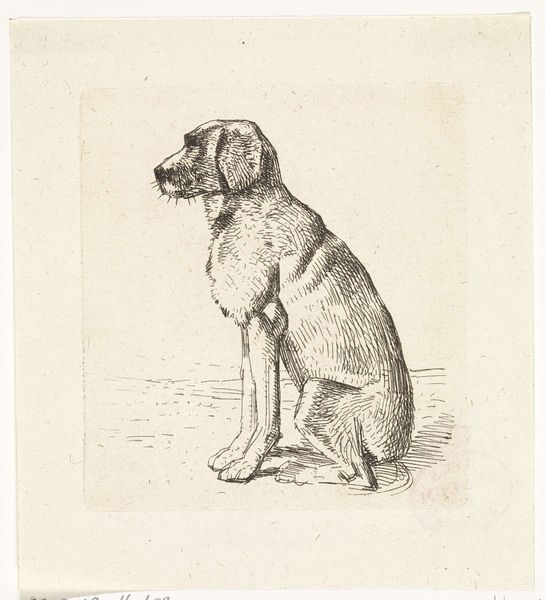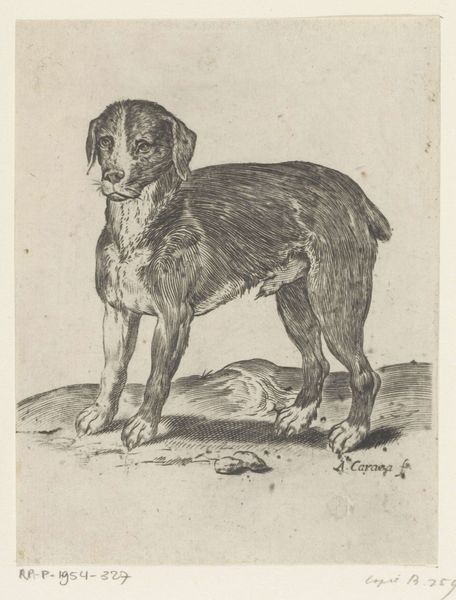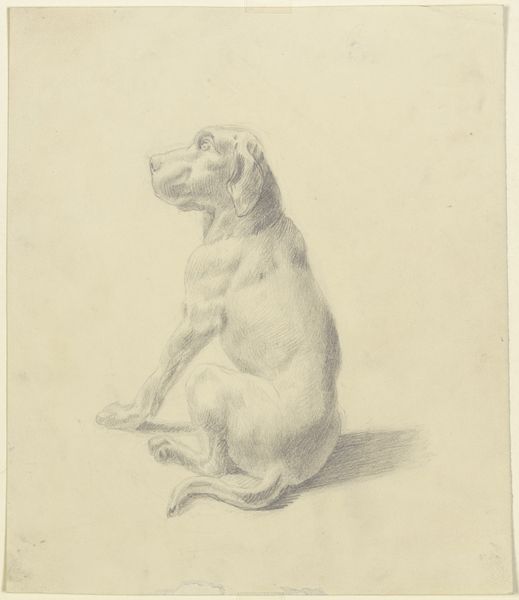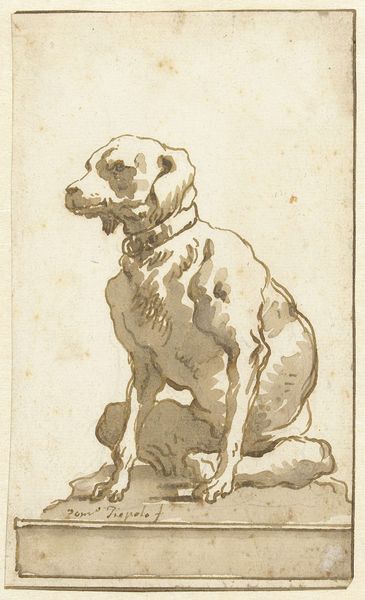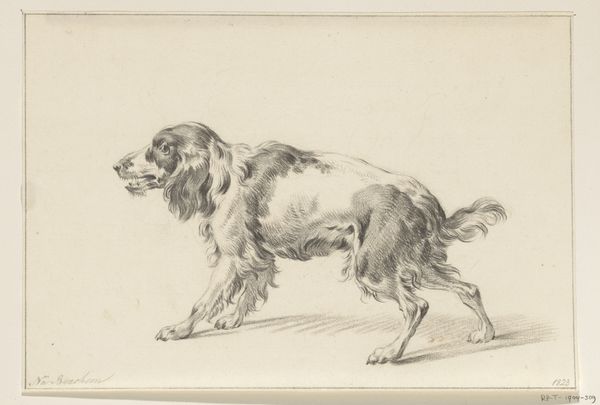
drawing, ink
#
drawing
#
dutch-golden-age
#
pencil sketch
#
dog
#
figuration
#
ink
#
genre-painting
Dimensions: height 94 mm, width 62 mm
Copyright: Rijks Museum: Open Domain
Editor: So this is “Zittende hond met halsband,” or “Sitting Dog with Collar,” a drawing made with ink and pencil by Jacob Toorenvliet sometime between 1650 and 1719. The dog has this sort of plaintive expression. What do you make of this seemingly simple drawing? Curator: Well, on the surface, it appears to be a genre painting, capturing a dog with a collar. But it's important to consider the social and historical contexts of the time. Dogs in the Dutch Golden Age weren’t merely pets. They were potent symbols of status, fidelity, and even control. That collar, for instance, speaks volumes about ownership and the power dynamics inherent in that relationship. What does the heart on the collar signify to you? Editor: Hmm, that's interesting. I guess I hadn’t really considered the heart as relating to the owner, more the loyalty of the dog. But you're right; it's *on* the collar, belonging to the owner, which means something quite different. So how does that shift our understanding of the work? Curator: It places this dog squarely within a socio-economic hierarchy. Think about who owned dogs like this, versus working dogs. How might class play into the very representation of animals in art? The fact that this dog is depicted in a sedentary pose, rather than performing a task, reveals its privileged position. What does this tell us about human relationship with nature? Editor: It feels like this innocent-looking drawing opens up into something much more complex about ownership and power in 17th-century Dutch society. Curator: Precisely! Art isn't created in a vacuum. By situating "Zittende hond met halsband" within these broader narratives, we gain a much richer understanding of its cultural and social implications. Editor: I never thought I’d be considering questions of class and ownership while looking at a drawing of a dog! This really challenges how I approach historical artworks. Curator: That’s the beauty of it. Each artwork is a doorway into understanding broader social dynamics.
Comments
No comments
Be the first to comment and join the conversation on the ultimate creative platform.
